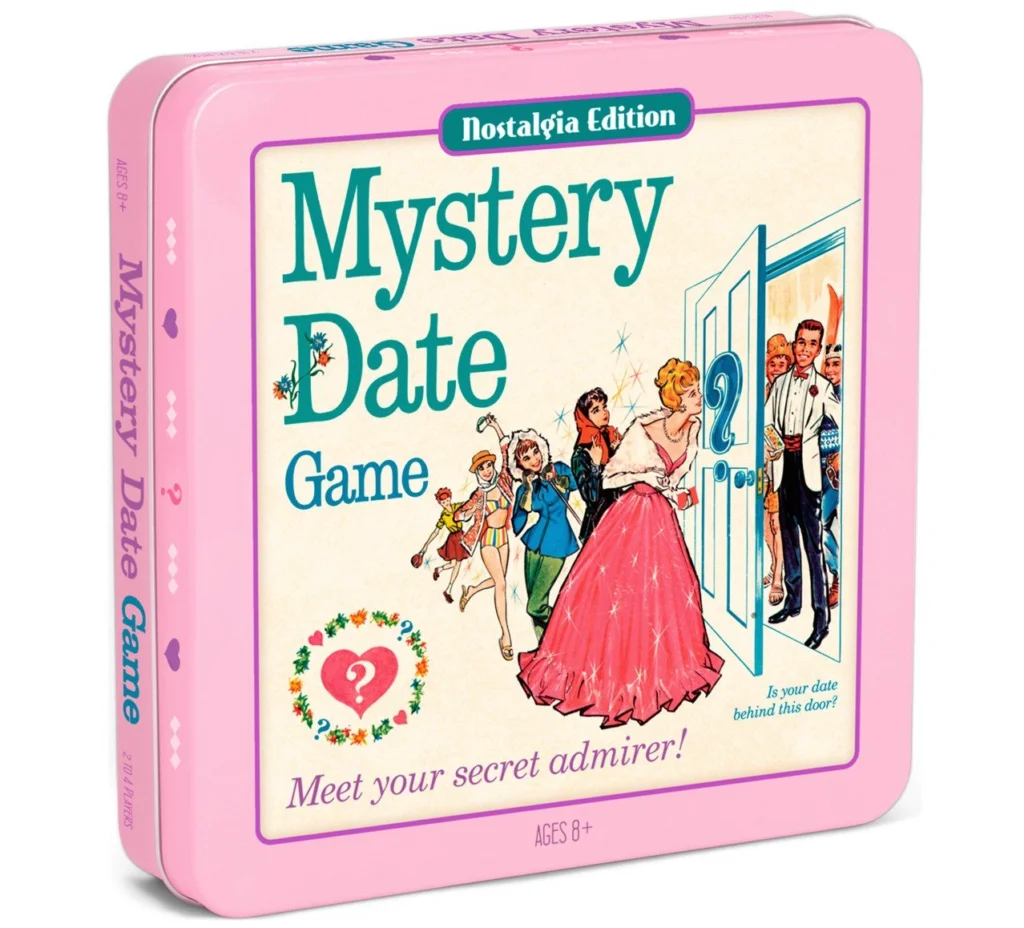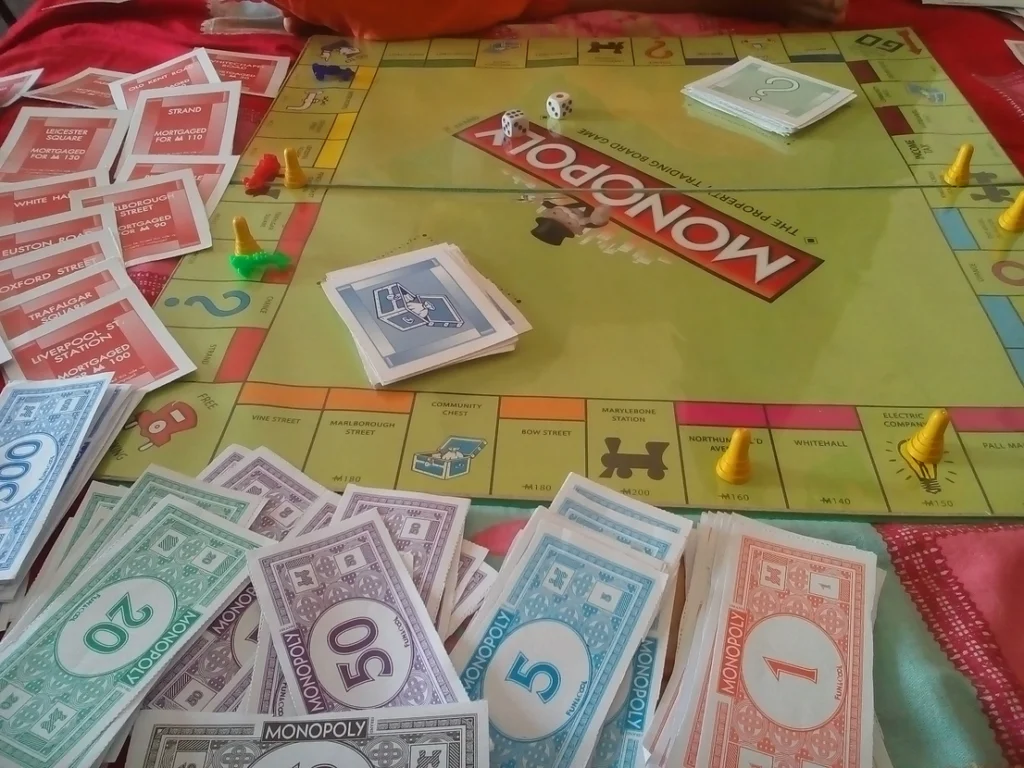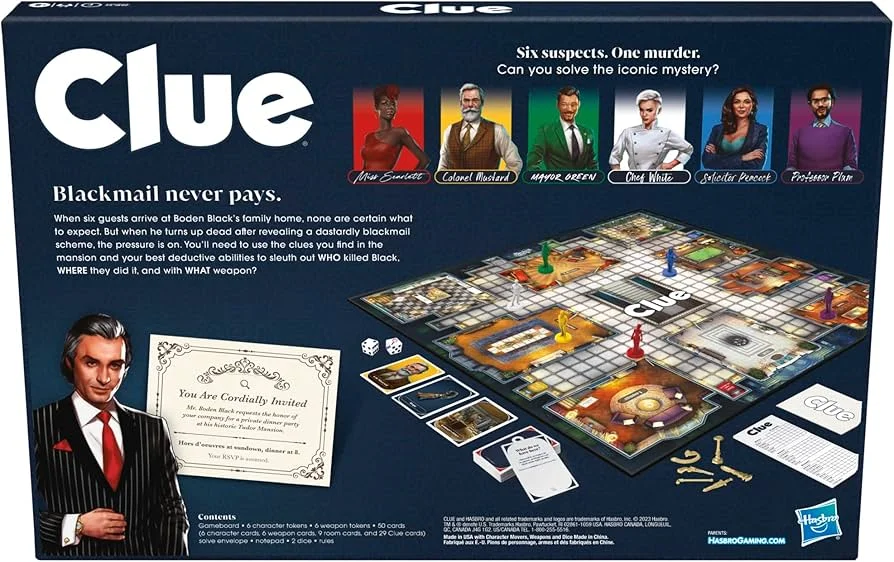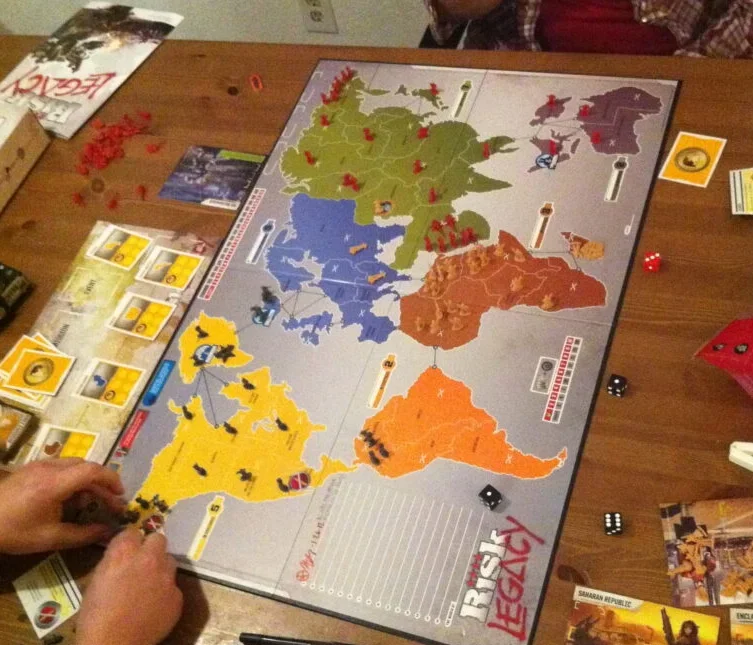Remember gathering around the kitchen table, the scent of Mom’s pot roast still lingering in the air as Dad pulled out the family’s favorite board game? Those cherished game nights of the ’60s and ’70s weren’t just about family bonding—they were about navigating some truly bizarre rule systems that, looking back, make us wonder what those game designers were thinking. From bizarre penalty systems to wildly complex victory conditions, these beloved classics had us scratching our heads even as we begged to play “just one more round.”
1. Mousetrap (1963)

The engineering marvel that was Mousetrap captivated our young imaginations, but the actual gameplay had rules so disconnected from its Rube Goldberg contraption that many families never played it “correctly.” The official instructions required players to move around the board collecting cheese pieces, with the right to build one section of the mouse trap only after landing on specific spaces—a tedious process most of us skipped entirely. Most families simply constructed the entire contraption first, then played a simplified version that bore little resemblance to the intended rules, because honestly, who had the patience for all that? BoarddGameGeek tosses a net over the history of this quirky game.
Looking back, the most perplexing aspect was how the elaborate trap—which took ages to assemble—was barely used during proper gameplay, often working just once or twice per session if you were lucky. The game’s inventor, Marvin Glass, reportedly never allowed his photo to be taken and was known for his eccentric behavior, which perhaps explains the disjointed nature of this beloved yet bewildering game. Market research later revealed that less than 10% of families actually played according to the original rules, with most creating their own “house rules” that focused on the only part anyone cared about: setting off that magnificent contraption.
2. The Game of Life (1960)

The Game of Life promised to simulate our journey through adulthood, but did so with some truly head-scratching rules about success and failure that reflected the bizarre social values of the era. Players were penalized for choosing education over immediate employment, with college graduates starting with significant debt while their less-educated counterparts were already earning—a strange message to send to impressionable youngsters. The game also forced all players to marry regardless of preference, adding a tiny spouse peg to your car whether you landed on the marriage space or not—there was simply no path for single living in this rigid simulation. Hasbro composed a thoughtful retrospective five decades after this relatable game came out.
Perhaps most peculiar was the game’s original scoring system, where your life’s worth was measured solely by your accumulated wealth, with no value assigned to experiences, happiness, or family connections. The “Millionaire Tycoon” square offered a shortcut to victory that involved risky stock investments—teaching children that gambling on the market was a reliable path to success, a lesson many would unfortunately take to heart in later decades. When you consider that the original 1860 version of the game included squares for “Disgrace,” “Poverty,” and “Ruin,” perhaps we should be grateful that the ’60s remake merely reduced our existence to a cold-hearted capitalist competition.
3. Mystery Date (1965)

Mystery Date had teenage girls spinning with anticipation, but its rules reinforced some truly questionable dating standards that make modern parents wince. The entire premise revolved around collecting outfit cards to match a surprise date revealed behind a plastic door—with the “dud” character portrayed as working-class and disheveled, teaching impressionable young girls that plumbers or mechanics were somehow inferior romantic prospects. Players would race to assemble the “perfect outfit” for various dating scenarios, with penalties for showing up inappropriately dressed—heaven forbid you wear casual clothes to a formal dance! Museum of Play courts the history of this unique game.
The strangest rule, however, was the complete lack of agency in selecting your mystery date—you simply opened the door and accepted whoever appeared, with your only goal being to match his attire rather than assess compatibility, personality, or even basic safety concerns. The game featured no conversations or interactions with these mystery suitors; their appearance and outfit were apparently the only relevant factors in determining a successful romantic encounter. When the game was reissued in the ’70s, the “formal dance date” wore a powder-blue tuxedo with ruffles—proving that while the problematic values remained unchanged, at least the questionable fashion choices evolved with the times.
4. Operation (1965)

Operation challenged our fine motor skills, but its peculiar rules about human anatomy would have horrified any medical professional foolish enough to play. The game asked players to extract a “butterfly stomach” and “bread basket” using metal tweezers, teaching children a bizarre internal organ system that bore no resemblance to actual human physiology. The “wrenched ankle” was somehow located in Cavity Sam’s center torso region, while the “charlie horse” was extracted from his upper thigh—anatomical errors that confused many budding science enthusiasts. We Are Tricycle puts into perspective how unique the game’s origins are.
The game’s most nonsensical rule was that players could only remove ailments assigned by drawn cards, meaning you might spend turns staring at easily grabbable “water on the knee” while being forced to attempt the nearly impossible “writer’s cramp” extraction. Perhaps most distressing to budget-conscious parents was the rule that if the tweezers touched the metal edge—setting off that nerve-jangling buzzer—you not only lost your turn but also had to pay the bank, teaching children that medical mishaps were primarily financial punishments rather than health concerns. Interestingly, the original prototype used a miniature electric chair rather than an operating table, with players attempting to extract items without “executing” the patient—a morbid concept Milton Bradley wisely modified before release.
5. Twister (1966)

Twister revolutionized physical gaming, but its original rules contained peculiar restrictions that revealed much about social anxieties of the era. The earliest versions included gender-specific rules suggesting that male and female players should alternate turns to maintain “proper decorum”—a thinly veiled attempt to address concerns about the game’s physical contact at a time when touching between unmarried folks raised eyebrows. Milton Bradley initially struggled to market the game as retailers deemed it too risqué, with one major catalog refusing to feature it due to concerns about “teenagers in compromising positions.”
The game’s most absurd rule was the “referee requirement,” insisting an uninvolved person operate the spinner and make judgment calls about falls or improper movements—essentially requiring families to exclude one member from the fun or invite an extra person solely to watch others play. The game nearly failed until Johnny Carson played it with actress Eva Gabor on The Tonight Show in 1966, demonstrating that adults could twist themselves into pretzels without moral collapse. Parents across America soon discovered the unwritten rule that most adult players conveniently forgot—that Twister becomes exponentially more challenging after a few glasses of punch at neighborhood parties.
6. Don’t Break the Ice (1968)

Don’t Break the Ice captivated children with its tension-building premise, but its oddly complex rule system belied its simple appearance. The game required players to meticulously construct a suspended ice floor by arranging 32 identical white plastic cubes in a rigid frame—a process that often took longer than the gameplay itself. The peculiar setup instructions demanded that the red center block supporting the tiny plastic man be positioned last, creating a structural weakness that contradicted the game’s purported lesson about architectural stability.
Perhaps the strangest rule was that players were forbidden from tapping ice blocks directly above the plastic skater, but could freely hammer at surrounding pieces—a physics-defying restriction that made little logical sense. The original rules also included a bizarre scoring system where dropping the skater wasn’t an immediate loss but rather awarded points to opponents based on how many blocks remained, leading to the counterintuitive strategy of sometimes trying to weaken the structure before your turn ended. Milton Bradley marketed the game as teaching “cause and effect relationships,” though the primary lesson most children gleaned was how to contain their frustration when a sibling deliberately shook the table just as they were about to tap a block.
7. Monopoly House Rules (1960s-70s variants)

Monopoly’s official rules were largely ignored by American families, who instead developed elaborate “house rules” networks that spread like folklore across neighborhoods and generations. The ubiquitous “Free Parking jackpot” rule—where tax payments and penalties accumulated in the center of the board for a lucky player to collect—appeared in no official rulebook yet somehow became standard practice in millions of homes, dramatically extending games that were already testing the limits of childhood attention spans. The official rules explicitly stated that no money should be placed on Free Parking, yet an estimated 80% of families incorporated some version of this wealth redistribution system.
Even more puzzling was the widespread “no purchasing on first lap” restriction many families imposed, forcing players to orbit the entire board before beginning property acquisition—a rule that added roughly 30 minutes to every game for absolutely no strategic benefit. Perhaps the most mysterious house rule phenomenon was the “immunity deals” system where players could negotiate bizarre non-monetary agreements like “you can skip my Boardwalk hotel twice if I can skip your orange properties for the rest of the game”—creating complicated social contracts that often ended in tears when someone inevitably claimed “that’s not what we agreed to!” Parker Brothers eventually acknowledged these variations by publishing a House Rules Edition in the 1970s, officially sanctioning the very rule mutations they had spent decades trying to correct.
8. Clue (1949, but popular through ’60s-’70s)

Clue presented itself as a sophisticated murder mystery, but its rules contained bizarre logical gaps that would have made Sherlock Holmes throw his deerstalker hat in frustration. The game asked players to solve a murder that apparently occurred while six suspects were wandering aimlessly through a mansion, carrying potential murder weapons from room to room for no discernible reason. Perhaps the strangest aspect was that players themselves represented the very suspects they were investigating, creating the philosophical paradox of trying to determine if you had committed the crime yourself—without having any memory of doing so.
The game’s most nonsensical rule was the movement system that allowed suspects to be magically transported across the mansion through secret passages, yet required tedious die-rolling to move between adjacent rooms. The original British version, called “Murder!” featured much grislier crime scene details and victim descriptions that were sanitized for American audiences—replacing specific wound descriptions with the more palatable generic “Mr. Boddy was murdered.” Parents who carefully analyzed the game realized it contained a troubling underlying message: that wealthy people in grand mansions regularly murdered each other with candelabras and lead pipes, yet continued to attend dinner parties together as if nothing had happened.
9. Risk (1959, peak popularity in ’70s)

Risk promised global domination but operated under military rules so divorced from reality that it would have made any actual general burst into laughter. The game’s most perplexing mechanic allowed players to accrue massive armies in a single territory—often resulting in 50+ troops crammed into Ukraine—with no concept of supply lines, logistics, or the simple fact that you can’t fit unlimited soldiers in Kamchatka. The rule permitting players to attack endlessly during one turn led to improbable scenarios where Argentina could somehow conquer the entire world in a single go, provided the attacker kept rolling favorable dice.
Perhaps the most historically questionable rule was the distribution of “bonus armies” for controlling entire continents, with Australia granting a mere two additional units while sprawling Asia offered seven—teaching children that Tasmania was apparently twice as easy to maintain as Mongolia. The game’s most rage-inducing rule was the arbitrary allocation of territories at the beginning, where strategic planning was rendered meaningless by the luck of the draw—often sparking heated debates about fairness before the first die was even rolled. Countless family game nights ended abruptly when it became mathematically obvious who would win, yet the official rules provided no mercy mechanism, forcing losing players to endure hours of inevitable defeat or resort to “accidentally” knocking over the board.
10. Candy Land (1949, popular through ’60s-’70s)

Candy Land holds a special place in our hearts as many children’s first board game, but its rules contained a particularly cruel twist that taught youngsters harsh lessons about fate’s arbitrary nature. The game featured absolutely zero strategic choices—players simply drew cards and moved accordingly—creating the unusual situation where the entire outcome was predetermined the moment the card deck was shuffled. Statistics experts have confirmed that in a four-player game, each participant had exactly a 25% chance of winning regardless of age, experience, or skill—perhaps the most democratic yet pointless competition ever created.
The most peculiar rule involved the character cards that could either rocket players forward or send them backwards to specific locations, potentially creating an endless loop if unlucky players kept drawing the same penalty card. Parents who actually read the rules were surprised to discover there was no official limit to this torture—technically, a child could be sent back to Plumpy or Lord Licorice indefinitely, trapped in a sugar-coated purgatory while siblings reached the candy castle. The game’s creator, Eleanor Abbott, developed it while recovering from polio in the 1940s to entertain children suffering in the hospital—perhaps explaining why its central lesson appeared to be that life’s path is predetermined and personal choices irrelevant, a surprisingly existential message hidden beneath gumdrop trees and peppermint forests.
Those beloved cardboard worlds gave us more than just entertainment—they taught us about patience, strategic thinking, and how to gracefully handle the crushing defeat of landing on Boardwalk with a hotel. While today’s games have certainly become more logical and balanced, there’s something wonderfully nostalgic about those strange, sometimes nonsensical rules that defined our rainy afternoon adventures. Perhaps it wasn’t about winning after all, but about gathering together, puzzling through bizarre instructions, and creating memories that would last far longer than anyone’s Park Place monopoly.


